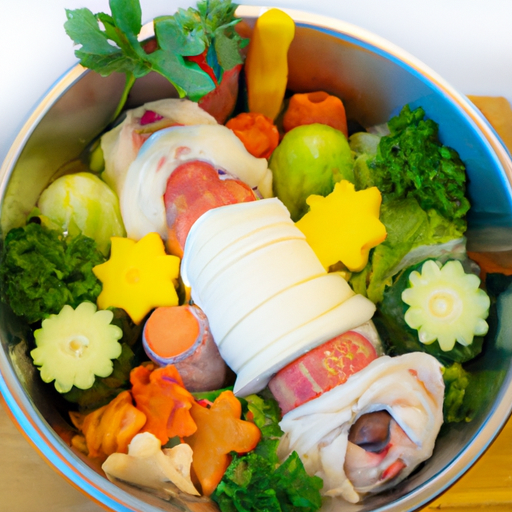As a devoted caregiver to your canine companion, you’ve likely heard of the raw food diet for dogs. But what exactly does it entail, and is it right for your pup? This guide will give you a comprehensive understanding of this increasingly popular dietary approach.
Understanding Raw Food Diets for Dogs
A raw food diet for dogs, often referred to as Biologically Appropriate Raw Food (BARF), centers on feeding dogs foods that are similar to what they would eat in the wild. This includes a variety of raw meats, bones, fruits, and vegetables. The belief is that this approach is more aligned with a dog’s natural eating habits and therefore more nourishing.
The raw food diet typically consists of:
- 60-80% raw, meaty bones (like chicken necks, wings, or beef ribs)
- 10-30% organ meats (like liver, kidney, or heart)
- 10-20% fruits, vegetables, and dairy (like apples, carrots, or yogurt)
While this may seem like a straightforward list, there’s a good deal more to understand about implementing a raw food diet correctly.
The Benefits and Risks
Benefits
Proponents of the raw food diet for dogs often cite the following benefits:
- Improved coat health and skin
- Higher energy levels
- Smaller, less odorous stools
- Reduced allergy symptoms
- Better weight management
Risks
However, there are also potential risks associated with a raw food diet:
- Nutritional imbalances can occur if the diet isn’t properly balanced.
- There’s an increased risk of certain bacterial infections due to handling and consuming raw meat.
- There’s a potential for injury from bones, such as broken teeth or intestinal blockages.
It’s essential to weigh these pros and cons before deciding to switch your dog to a raw food diet.
Transitioning to a Raw Food Diet
If you decide to transition your dog to a raw food diet, it should be done gradually to avoid gastrointestinal upset. A typical transition might look like this:
- Slowly introduce raw meat into your dog’s current diet, starting with 10% raw food and 90% current diet.
- Gradually increase the proportion of raw food over several weeks until it makes up 100% of your dog’s diet.
Remember, every dog is unique, and what works for one may not work for another. It’s always best to consult with a veterinarian or a canine nutritionist before making significant changes to your dog’s diet.
Creating a Balanced Raw Diet
Ensuring your dog’s raw diet is balanced is crucial. Here’s a basic guideline:
| Food Type | Percentage of Diet |
|---|---|
| Raw, meaty bones | 60-80% |
| Organ meats | 10-30% |
| Fruits, vegetables, and dairy | 10-20% |
Remember, this is just a guideline. Depending on your dog’s age, size, and health status, these proportions may need to be adjusted.
FAQs
Is a raw food diet safe for all dogs?
Most dogs can adapt to a raw food diet, but there are exceptions. Puppies, pregnant dogs, dogs with certain health conditions, or dogs with a compromised immune system may not be suitable candidates. Always consult with a veterinarian before starting your dog on a raw food diet.
Can I feed my dog both raw food and commercial dog food?
Yes, but it’s not recommended to mix them in the same meal. The digestion times for raw food and commercial dog food are different, which could cause digestive issues.
Is it expensive to feed my dog a raw food diet?
The cost can vary substantially based on the types of meat you choose and where you buy them. Generally, a raw food diet can be more expensive than a commercial dog food diet.
Being a caregiver to your dog means making thoughtful, informed decisions about their care. Understanding a raw food diet for dogs is a significant part of that process. By considering the benefits and risks, you can make the best choice for your dog’s nutritional needs.



